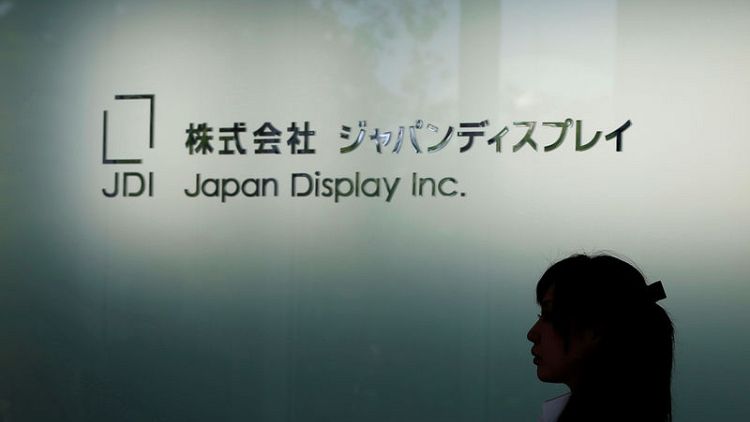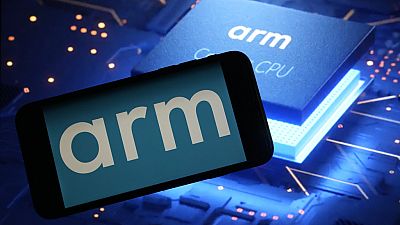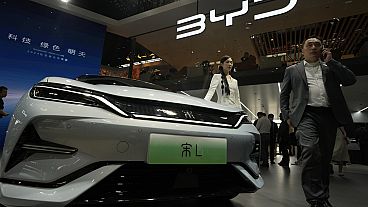By Makiko Yamazaki
TOKYO (Reuters) - When Japan Display Inc broke ground on a new factory in central Japan in 2015, the future looked bright for one of the world's top vendors of liquid crystal display (LCD) panels.
The plant would strengthen the company's position as the primary screen supplier for Apple Inc as sales of the iPhone 6 soared. And the U.S. smartphone juggernaut said it would front most of the $1.5 billion (£1.2 billion) in costs, with Japan Display paying it back with a percentage of screen sales, according to two company sources.
Four years later, Apple's shifting fortunes have brought Japan Display to its knees and threaten to end Japan's long run as a leader in display technology.
A slowdown in iPhone sales, combined with a proliferation of new iPhone models - many of which use newer organic light-emitting displays (OLED) - have left Japan Display's new factory running at half capacity.
But it still owes Apple a majority of the construction cost, one of the company sources said. He declined to give the exact amount.
Desperate for capital, Japan Display is looking to an investor group, led by China Silkroad Investment Capital, for a bailout, two sources with direct knowledge of the matter said. The deal would give the Chinese group a near-majority stake in exchange for an investment of $500 million to $700 million, the sources said.
The group plans to build an OLED panel plant in China using Japan Display's technology, according to those two sources.
The company's woes show how weak iPhone sales and a broader slowdown in the smartphone business are causing pain across the Asian electronics supply chain.
"In retrospect, the new plant was unnecessary," one of the sources with direct knowledge of the bailout talks said. "But the decision wasn't wrong back then. Japan Display started to pick up steam thanks to Apple at the time, and Apple wanted the new plant."
Japan Display wasn't alone in betting on robust growth in iPhone sales, which looked especially attractive because of Apple's now-abandoned strategy of offering few variations in each product cycle.
"We were all thrilled to see lifetime sales of a single iPhone model reaching 100 million units," a source at another Apple parts supplier said.
"Supplying components for just one model in massive volume is extremely cost-efficient," he said. "At the same time, we exposed ourselves to huge volatility risks."
Japan Display has built relationships with other smartphone vendors, including Chinese powerhouses Huawei, Xiaomi, and OPPO.
But it is losing their orders too as sales growth softens and the Chinese players switch to domestic panel makers such as BOE Technology and Tianma Microelectronics, which have sharply improved the quality of their screens.
Japan Display supplied almost a third of Huawei's smartphone screens in 2015, but its share had plunged to 4 percent by the third quarter last year as the Chinese company turned to BOE and Tianma, according to researcher IHS Markit.
Sources at Japan Display and other Apple suppliers interviewed for the story declined to be identified as they are not authorised to talk to the media. Suppliers rarely speak about business with Apple on the record because of strict non-disclosure agreements.
NON-APPLE BUSINESSES
Japan Display was formed in 2012 in a government-backed merger of the ailing display units of Sony Corp, Toshiba Corp and Hitachi Ltd.
It boasts strength in so-called thin-film transistor technology (TFT), crucial for making high-resolution images on both LCD and OLED panels. In addition to its Apple business, which accounted for more than half the company's revenue over the last four years, it's a top supplier of dashboard panels for major automotive component companies such as Continental.
But Japan Display has struggled to navigate the fast-changing display business.
Its new LCD factory was still under construction when Apple informed Japan Display in autumn 2015 that it planned to move quickly away from LCD to the newer OLED technology, two former company officials said. It was too costly by then to abandon the half-completed plant, one of them said.
Japan Display's management at the time, led by former Sanyo Electric executive Mitsuru Homma, promised to start mass-production of OLED panels by 2018.
In the meantime, the management shut down older, unprofitable LCD lines to shift resources to OLED, but its main investor, a state-backed fund, blocked plans for drastic job cuts for fear of public backlash, one of the former officials said.
Unexpectedly weak sales of the iPhone 6s created a cash crunch in 2016, and Homma resigned early the next year after the company took a $640 million bailout from the state-backed fund.
The new chief executive, Nobuhiro Higashiiriki, declared a full-on shift to OLED. But the company was already behind rivals, notably Samsung Electronics, and still needed more cash for OLED investment. Disappointing sales of the iPhone XR, the only LCD model in Apple's 2018 lineup, were yet another blow.
"The company now looks exhausted, with many engineers leaving," one former employee said.
Some board members have expressed concerns about technology transfer that may follow the proposed Chinese investment, sources familiar with the talks said. But the government investment fund has run out of patience.
"We don't have any other option," one of the company sources said, adding that the government has been quiet about the bailout plan. "They could argue that display technologies are not something Japan must keep and protect, when Chinese panel makers are ramping up more display plants."
(Reporting by Makiko Yamazaki; additional reporting by Yoshiyasu Shida; Editing by Jonathan Weber)



